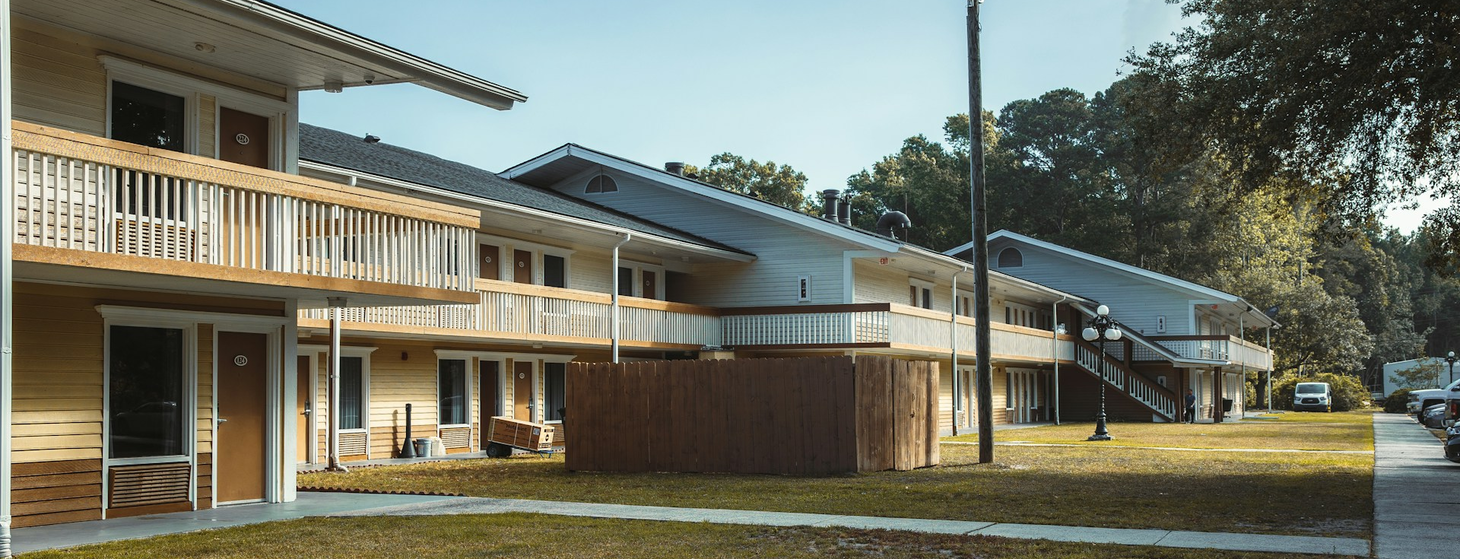Intel

Dwellings Served By an Exterior Passageway
Recently I was asked why more residential buildings in BC are not designed with exterior passageways. This is a good question, and I suspect it has to do with the floor space efficiency of a double loaded public corridor design. However, I suspect we will start seeing a lot more residential buildings with exterior passageways as a way to avoid meeting the adaptable dwelling requirements of the 2024 BC Building Code.
The most contentious requirement of the new adaptable dwelling measures is the additional space required for bathrooms and the requirement to locate the toilet a specific distance from an adjacent wall. The changes no longer allow the typical 5ft by 8ft bathroom with a vanity, toilet, and bathtub on a plumbing wall. While there have been some clarifications of the requirements, the bathroom floor area requirements have notably increased.
Earlier this year, I submitted a request for clarification to the BC Building Code Interpretation Committee to confirm if dwelling units not served by an interior public corridor are not required to comply with the adaptable requirements. The committee confirmed that dwelling units served by an accessible exterior passageway are not required to meet the adaptable requirements.
This means that designs that utilize exterior doors at the ground level and above are not required to meet the adaptable requirements, even if the exterior passageways are served by an elevator and are accessible paths of travel.
One thing to keep in mind is that even when not subject to the adaptable dwelling unit requirements, all dwelling units are required to have at least one bathroom that is provided with wall reinforcement behind and beside the toilet. Since the toilet in a non-adaptable suite is not required to be located a specific distance from an adjacent wall, it is unclear as to how this requirement will be implemented or enforced.
Wisdom

The Palisades Fire of Los Angeles: Lessons to Be Learned
The city of Los Angeles is no stranger to wild fires over the years of its existence, with the latest being the Palisades Fire of January, 2025. This research paper by Dr. Vyto Babrauskas discusses the historical context and potential causes of the origin and spread of the fire.
For anyone interested in WUI (wildland-urban interface) and wild fire hazards and risks, this is a great review of the Palisades Fire based on the currently available information.
Intriguing

Parabolic Roof
The wave-like vaulted roof designed by Aidia Studio over the market in Nicolás Bravo, Quintana Roo, Mexico, is an interesting project to consider against a hypothetical application of the BC Building Code.
The covered market area of 50 stalls has a footprint area of about 7 700 sqm, over the generally flat site. A building of this area, even though it is a single storey, falls under the any area, any height requirements of Article 3.2.2.66. for Group E major occupancy, and is required to be of noncombustible construction and sprinklered throughout under the 2024 BC Building Code.
On close inspection of the images of the building, the roof structure is indeed constructed of noncombustible materials with a steel structure supporting the undulating roof that is covered with brick work. The steel structure is fashioned like a "tree" with four posts with a roof drain located in the middle of the four posts. The posts are positioned on an 8 m by 8 m grid, with no exterior walls enclosing the roof structure. The artisan stalls are permanent structures with roll up doors and concrete block walls that do not extend to the underside of the roof, presumably with their own concrete or masonry ceiling. The travel from any point under the roof structure to "outside" the building, looks to be no more than about 20 m. No sprinklers are evident in the design.
Overall, the design largely fits into the BC Building Code. Compliance items of concern are the lack of egress doors that swing on a vertical access leading from the artisan stalls (only roll up doors provided) per Sentence 3.3.1.11.(1), and the missing sprinklers.
- Given the small size of the artisan stalls (a maximum of 144 sqm) and the expectation that the roll up doors are open when the stalls are occupied, the necessity of mandating vertical swing doors seems unreasonable and the application of an Alternative Solution appropriate. The Building Code does implement special provisions for exit doors from mercantile floor area under Article 3.4.6.16., though these do not apply within the floor area as would be the case in this design. However, an Alternative Solution can be formulated on these measures for exits, as it is understood that the roll up doors are primarily intended to provide security to the contents when all occupants have left the artisan stall.
- Fire sprinklers have been shown to provide significant protection to building occupants and property. The Building Code does allow smaller mercantile buildings and low fire load industrial occupancies to be constructed without sprinkler protection. In this case, I think it would be reasonable to develop an Alternative Solution to delete sprinklers from this building, given the height and open nature of the building, along with fire compartmentalization provided by the artisan stalls. Such an alternative solution would reduce the overall construction and ongoing maintenance costs of the building and remove the visual clutter of the sprinkler system under the roof and within the artisan stalls.
What do you think about applying the BC Building Code or the substantially similar National Building Code of Canada to this building design? Email me your thoughts at bfraser@celerity.ca.
Unsolicited Opinion

Build Canada Homes!
In the quest to meet their campaign promises of building new affordable homes in Canada, the Federal Government has now launch the new agency, aptly called Building Canada Homes, that is "taking a bold new approach with unprecedented investments, to increase housing supply in Canada".
I do feel apprehensive about this. Here in BC, we already have several agencies working to develop new affordable housing throughout the Province, with the most prominent being BC Housing. I expect similar initiatives have long been underway in the rest of the Provinces as well. But, we can't forget that each major city and major regional district are also in the game, not to mention the many non-profits that are also developing projects with funding from CMHC, BC Housing, Regional Districts, and the Cities. Now, the Feds are in full swing on the action as well, powered by the usual political rhetoric. Welcome to the party; you're a little late.
I will say I do think there are going to be some advantages. Federal lands are in theory (I am not a lawyer and this is not legal advice) not subject to Provincial or regional zoning bylaws and processes that can slow the development process. As such, Build Canada Homes could potentially remove a level of red-tape from the usual process. Of course, site services and access on and off the site will generally need to come from the adjacent City or Regional District, so some playing nice is indeed required rather than, you know, telling the adjacent party to, well, you know. I will note that I have seen Cities significantly reduce requirements and prioritize social-housing projects, so the federal agency may not always have a raging advantage in this area, that the politicians might think they do.
I do also question the amount of land that the federal government owns that could indeed be developed for housing. In general, I am sure there is some land, but when I look around, I tend to see buildings already occupying the properties that are clearly federally owned. Perhaps building a 100 storey residential tower above the Sinclair Centre Heritage building in downtown Vancouver is an option, and people will have to get their passports at some other location for a few years. Maybe they are planning to go on a buying spree? That would be an interesting adjustment for the market. The bare land I have seen that is federal, always seems to have a Department of National Defence sign on the fence surrounding it, and I suspect that DND isn't overly interested in giving these lands over for housing. I could be wrong though.
What do you think about all this? Shoot me your thoughts at bfraser@celerity.ca. The RAIC has posted their thoughts, how about you?
